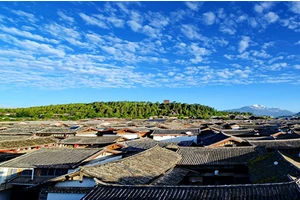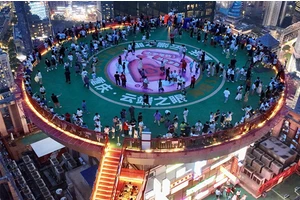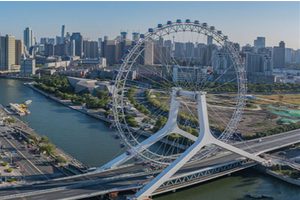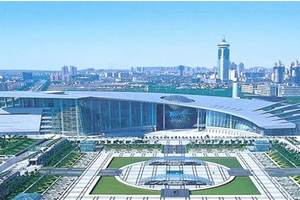Anhui Jiangxi Tourism Route Recommendation
Are Anhui and Jiangxi close?
Jiangxi, Anhui Province is the next-door neighbor, next to it. Wangjiang, Susong, Jingde and other counties and cities in Anhui are across the river from Jiujiang, Hukou, Pengze and Jiangxi. It is geographically connected with Wuyuan.
Historically, Anhui is in many places in Jiangxi. You have me and I have you. For example, Wuyuan, a scenic place in Jiangxi, used to be under the jurisdiction of Anhui.
Jiangxi, Anhui, separated only by a strip of water, is a good brother!
Jiangxi is still relatively close to Anhui, with a distance of only 437.49 kilometers. Now, the transportation is relatively convenient. You can get to the two places quickly by train and high-speed rail, and basically it won't take long. Now many people have cars at home. Jiangxi Wuyuan is adjacent to Huangshan Mountain! Moreover, Wuyuan is in constant contact with ancient Huizhou!
How far is Jiangxi from Anhui? How long does it take by car?
The distance from Jiangxi to Anhui is 437.3 kilometers, and the journey time is 5 hours and 11 minutes. The fuel cost is about 275 yuan, and the high-speed bridge toll is about 210 yuan, with a total toll expense of 485 yuan.
Choose the route that doesn't take the expressway, passing through Changwan Highway, S208, Poyang Line, Bixie Line, S222, Yanshan Line, G206 and Jinzhai South Road. It takes 10 hours and 52 minutes to take the national highway and provincial highway instead of the expressway, and the distance is 531.2 kilometers, and the fuel fee is 330 yuan.
Which is more mountainous, Anhui or Jiangxi?
Anhui Province and Jiangxi Province, which have more mountains, can be seen from the map. The topography of Anhui Province is high in the west, low in the east, low in the north and high in the south, mainly the Dabie Mountains and the hills in the south of the Yangtze River. The famous mountains include Huangshan Mountain, Jiuhua Mountain and Tianzhu Mountain. Jiangxi province is surrounded by mountains on three sides, with the Luoxiao Mountain range in the south and Wuyishan Mountain range in the north, and the Yangtze River and Dabie Mountain in the north, mainly including Lushan Mountain, Sanqingshan Mountain, Longhu Mountain and so on. In terms of floor space, Jiangxi is more than Anhui; In terms of fame, Anhui is superior to Jiangxi.
How far is it from Jiangxi to Anhui?
The whole journey is about 437.49 kilometers.
Jiangxi Province, the provincial administrative region of China, is called Gan for short, and it is also called the land of Jiangxi and Poyang. It is the "land of plenty" in the south of the Yangtze River, and it was called "Wu Tou Chu Wei, Yue Hu Min Ting" in ancient times. In 733 AD, Emperor Xuanzong of the Tang Dynasty set up the West Road in the south of the Yangtze River, which earned him the name of the province, and the largest river in the province was Ganjiang, which was called Ganjiang for short.
Jiangxi Province is located between 24 29 ′ 14 ″ north latitude and 30 04 ′ 41 ″ east longitude, bordering Zhejiang Province and Fujian Province in the east, Guangdong Province in the south, Hunan Province in the west, Hubei Province and Anhui Province in the north and connecting the Yangtze River in the east. Jiangxi province covers an area of 166,900 square kilometers, governs 11 prefecture-level cities and 100 counties (cities, districts), with Nanchang as the capital.
In addition to the relatively flat north, the province is surrounded by mountains on three sides in the east, west and south, and the hills in the middle rise and fall, making it a huge basin that inclines to Poyang Lake as a whole and opens to the north. There are more than 2,400 rivers in the whole territory, and Ganjiang, Fuhe, Xinjiang, Xiuhe and Raohe are the five major rivers in Jiangxi. Poyang Lake is the largest freshwater lake in China. Jiangxi is located near the Tropic of Cancer, with a warm climate and abundant rainfall, with an average annual precipitation of 1341 mm to 1940 mm; It has a long frost-free period and a subtropical humid climate.
Rice is the main grain crop in Jiangxi, followed by wheat. It is also rich in rape, camellia, tea, jute, ramie and citrus. Tea is mostly produced in the northern mountainous areas, and "Ninghong" and "Wulu" are all famous products in tea. The main industries are non-ferrous metallurgy, coal, steel, machinery manufacturing, fertilizer and so on. Jingdezhen's porcelain craft has a long history and its products are well-known at home and abroad.
In 2015, the GDP of Jiangxi Province reached 1,672.38 billion yuan. According to the results of a 1% population sampling survey, at the end of 2015, the resident population of Jiangxi Province was 45,656,300, an increase of 0.52% compared with 2014. Chinese dialects in Jiangxi Province mainly include Gan dialect, Hakka dialect, Jianghuai mandarin, Southwest mandarin, Wu dialect and Hui dialect.
How far is Anhui from Jiangxi?
The journey from Anhui Province to the capital of Jiangxi Province is about 423 kilometers. The capital of Anhui is Hefei, which is called "Lu" or "He" for short, and the capital of Jiangxi is Nanchang, which is called "Gan" for short. Anhui Province and Jiangxi Province are located in the southeast of China and belong to the east of China.
Jiangxi Province, located in the southeast of China, is a province with beautiful natural scenery and rich human landscape. The following is a week-long proposal for Jiangxi tourism routes, which you can adjust according to your own time and interests.
Day 1: Nanchang
Morning: Arrive in Nanchang, the capital city of Jiangxi Province. First, visit the August 1st Uprising Memorial Hall to learn about the history of the Communist Party of China (CPC).
Afternoon: Visit Tengwang Pavilion, an ancient pavilion overlooking the beautiful scenery of Ganjiang River.
Evening: Taste local delicacies in Nanchang, such as Dandan Noodles and crock soup.
The next day: Lushan Mountain
Morning: Depart from Nanchang to Lushan Mountain (about 1.5 hours by car).
Noon: After arriving at Lushan Mountain, have lunch and then start sightseeing.
Afternoon: Visit natural landscapes such as Qinhu Lake, Flower Path and Botanical Garden, and feel the natural beauty of Lushan Mountain.
Night: Stay in a hotel on the mountain and enjoy the quiet night in the mountain.
Day 3: Lushan-Jingdezhen
Morning: Continue to visit Lushan Mountain, such as Sandie Spring and Wulaofeng.
Noon: Go down to Jingdezhen (about 2 hours by car).
Afternoon: After arriving in Jingdezhen, visit ceramics museum to learn about the history and manufacturing technology of ceramics.
Evening: Experience the making of ceramics and make a ceramic work by yourself.
Day 4: Jingdezhen-Wuyuan
Morning: Continue to visit the ceramic market and ancient kiln in Jingdezhen.
Noon: Leave Jingdezhen and go to Wuyuan (about 3 hours' drive).
Afternoon: After arriving in Wuyuan, visit Huangling to bask in the autumn scenery and enjoy Huizhou architecture and beautiful rural scenery.
Evening: Stay in Wuyuan and experience the quiet night in the countryside.
Day 5: Wuyuan-Jiujiang
Morning: Continue to visit Wuyuan, such as Shicheng, Jiangwan and other ancient villages.
Noon: Leave Wuyuan and go to Jiujiang (about 2 hours by car).
Afternoon: After arriving in Jiujiang, visit Poyang Lake, enjoy the lakes and mountains, and experience the fisherman's music.
Evening: Stay in Jiujiang and enjoy the tranquility of the lake.
Day 6: Jiujiang-Nanchang
Morning: Continue to visit Jiujiang, such as the West Sea of Lushan Mountain and the ancient tombs of Han Dynasty.
Noon: Return to Nanchang (about 1 hour's drive).
Afternoon: Shopping in Nanchang and tasting local snacks.
Evening: Finish a pleasant trip to Jiangxi and get ready to return.
Precautions:
Adjust the itinerary according to the season and weather conditions to avoid rainy season or high temperature weather.
Book hotels and transportation in advance to ensure a smooth trip.
Pay attention to protecting the environment and don't litter in the scenic spot.
Respect local customs and habits and get along well with local residents.
Jiangxi is a charming place, both natural scenery and human landscape will leave a deep impression on you. I hope this route can help you plan an unforgettable trip to Jiangxi.






